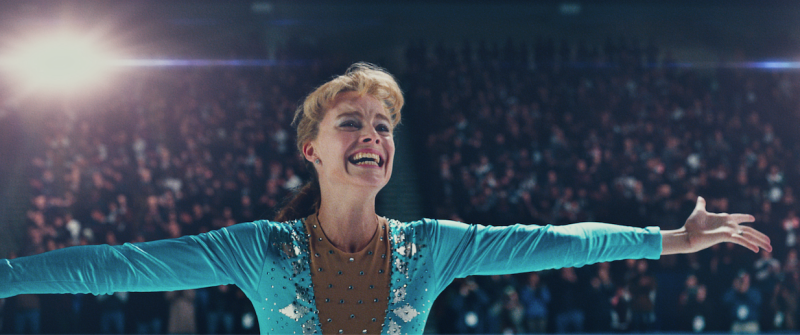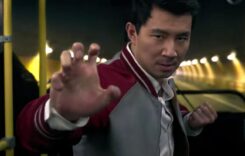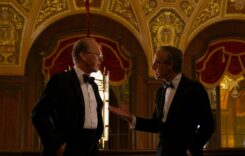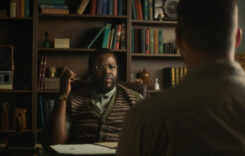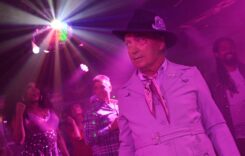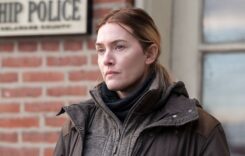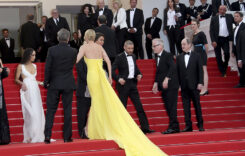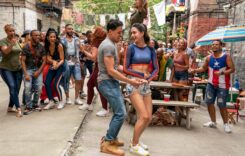JANUARY 11, 2018
Seriously, was anyone really crying out for a film biography of disgraced figure skater Tonya Harding? Well, apparently screenwriter Steven Rogers (“Stepmom”) thought so and enlisted the aid of director Craig Gillespie (“Lars and the Real Girl”) to create one of the most surprising hoots of this film year.
Rogers has stated that he had separate interviews with the real-life Tonya and her now-ex-husband Jeff Gillooly, and he was struck by how different their recollections were of what the film calls “the incident” — the kneecapping of Tonya’s figure skating rival Nancy Kerrigan shortly before the 1994 Winter Olympics.
So Rogers has structured his screenplay with mock “confessionals” (a la “The Office” or “Modern Family”) in which Tonya (Margot Robbie) and Jeff (Sebastian Stan) speak directly to the camera with their version of the truth, and the story is told with the truth lying somewhere in between their recollections.
We first meet Tonya at age 4 when her monster of a stage mother, LaVona Fay Golden (Allison Janney, who won a Golden Globe for her performance here), browbeats top skating coach Diane Rawlinson (Julianne Nicholson) into taking on her daughter as a pupil. By the time Tonya reaches her teens (a miracle, considering the number of times that LaVona brutally beats her), Diane has given up all of her students to teach Tonya full-time.
Hormones being what they are, Tonya’s attention eventually turns from skating to boys, and, much to her mother’s displeasure, Tonya takes up with ghastly-mustachioed Jeff who, though he presents a reasonable facade to the public, beats up Tonya even more brutally then her mother. Yet Tonya, anxious to find a way out of her miserable family situation, decides to put up with it and stick with him.
Tonya’s technical skills (achieved through practice, practice, practice) bring her up to the national level, although she never quite beats the field largely because of her trailer-park sensibility, thanks to snobby judges. (She skates to ZZ Top rather than Debussy, and her costumes are obviously hand-made.) But when she becomes the first woman to attempt and land the difficult triple axel (3 1/2 revolutions), her talent finally could not be denied, and she begins to ascend to the winner’s circle.
However, when Nancy Kerrigan comes on the scene, her squeaky-clean image is just what the skating establishment wants, and she begins to get judge’s scores that relegate Tonya to a runner-up. For Tonya and company, this will not do, and that directly leads to “the incident.”
These are the facts of the case which on their face don’t seem very funny. But it’s the hilarious ways that Gillespie and Rogers deal with those facts that makes “I, Tonya” a one-of-a-kind biography. In the mockumentary “confessionals,” Tonya and Jeff’s attempts to set the record straight reveal time after time just how they each have zero self-awareness and are generally clueless about the way they are being perceived.
Gillespie not only breaks the fourth wall with his confessionals, in which it appears that the principals are talking to the director. But Gillespie includes moments where the characters smash the fourth wall completely, addressing us in the audience directly. For example, at a moment in which the Tonya/Jeff scenes have gone on for about 20 minutes, LaVona/Janney pops up onscreen and bitches,
“Well, my story line is disappearing right now. What the fuck!”
And when the the narrative reaches the time for “the incident,” Tonya stares at us and cracks,
“That’s what you all came for, folks!”
Yes, Tonya, it is. Gillespie actually films the physical attack on Kerrigan with some discretion and focuses primarily on the aftermath, which is a wise move and makes the film’s third act even more powerful.
The only area where the film has trouble coming together is the tone of the domestic violence scenes. LaVona beats Tonya with a hairbrush and kicks a chair out from under her (not to mention the verbal abuse), but these scenes are placed around others where we’re laughing, so what are we to think? Similiarly, when Jeff bashes Tonya’s head against a glass panel (among other attacks), it becomes difficult to laugh at the obviously humorous scenes after that. The film manages to get back on track each time, but the laughs are uneasy, as we’re never sure if some horrible act of violence is coming next.
Fortunately, Gillespie has assembled a first-rate cast whose skill keeps us focused on what is most important about about “I, Tonya” and that is its characters. Paul Walter Hauser is terrific as Shawn Eckhardt, a schlub who is supposedly Tonya’s bodyguard but who is the catalyst behind planning the attack on Kerrigan. Nicholson is fine as the coach, and Bobby Cannavale has a few funny bits as a tabloid TV producer who still thanks his lucky stars for the Tonya story. And Sebastian Stan brings just the right amount of oiliness (just check out that stache above) to the love/hate relationship that Jeff and Tonya shared.
But “I, Tonya” really belongs to Allison Janney and Margot Robbie. Unlike “Lady Bird’s” Laurie Metcalf, Janney’s main competition for the Supporting Actress Oscar (don’t get kneecapped, Laurie!), Janney’s LaVona has no redemptive arc, but the actress has absolutely no fear embracing a character that the audience absolutely hates. In fact, she seems to glory in it, which in part is why she’s so effective here. It’s top-notch work from one of our finest film and TV actresses.
Still, “I, Tonya” belongs heart and soul to Margot Robbie. Building a career where she’s usually the best part of her films (“The Wolf of Wall Street,” “Suicide Squad”), Robbie, like Janney, is not afraid of being disliked which, ironically, makes her Tonya even more endearing. Granted there’s some CGI in the skating scenes in which Tonya has to executive a triple axel, but a good deal of the skating is clearly Robbie in what is a tremendously taxing physical performance.
However, it’s not just the physicality, but it’s her embrace of Tonya’s trashy side and motivation to prove herself that’s the most lasting part of her career-making performance. She knows she’s good on the ice, and even though the character proclaims that nothing ever is her fault, Robbie brings a determination to be vindicated for her reputation in a role for which you can’t help but cheer. Great work.
I have to give a special shout-out to Stedicam operator Dana Morris, a skater himself, who brings the four main skating performances to life by trailing Robbie as she performs her routine, keeping the camera low, so that we can appreciate just how physical the challenge of performing a skating routine can be. Usually, when we watch the Olympics, the camera is set some distance back, but in “I, Tonya” you’re down and dirty with the skater herself. It’s simply a revelation.
GRADE: A-


